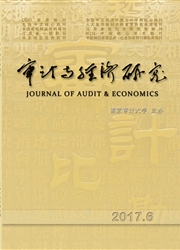

 中文摘要:
中文摘要:
以新凯恩斯菲利普斯曲线为分析框架,在考虑利率滞后项和预期项的情况下,通过最优化中央银行的目标损失,构建中国的通货膨胀方程,并采用1992年以来的季度数据对中国通货膨胀的形成因素进行实证分析,以研究我国货币政策对通货膨胀事后调节和事前引导的实际效果。实证结果显示,我国的通货膨胀水平主要受经济主体通货膨胀预期和产出缺口的影响;利率变化在短期内并不改变通货膨胀的变化方向,不过随着利率市场化改革的深入,利率对通货膨胀的影响逐步显现;预期实际利率对当期物价波动有着正向引导作用,并且在子样本的稳健性分析中证实这种关系有加强趋势。这些实证检验结果对我国调控物价水平及制定更加有效的货币政策提供理论支持。
 英文摘要:
英文摘要:
In this paper,by taking into account the lagged and the expected interest rates,we first construct a China's inflation equation by optimizing the central bank's target loss under the New Keynesian Phillips Curve framework.Then we analyze the formation of China's inflation and study the practical effect of monetary policy after adjustment and prior guidance for inflation,based on the quarterly data since 1992.The empirical results show that the inflation in China is mainly affected by economic agents' expectations of inflation and output gap.Interest rates do not change the direction of inflation in the short term,but with the market-oriented interest rates reform,the effect of interest rates on inflation is being gradually revealed;Expected real interest rate has a positive guide for current price,and the sub-sample analysis has strengthened the conservatism of this relationship.The empirical results has a good policy reference for controlling China's inflation and implementing its monetary policy.
 同期刊论文项目
同期刊论文项目
 同项目期刊论文
同项目期刊论文
 期刊信息
期刊信息
